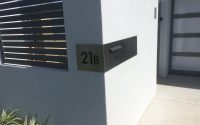Self-Watering Planters: The Ideal Choice for Container Planting
Some plants have to be watered every few days, while others can go days or even weeks without a drop. Watering your plants and knowing which one how much water exactly needs can be time-consuming and draining. Plus, there is always the chance you might under-water or over-water them which may hinder their thriving.
You must have wondered at least once, how nice would it be if the planters could water the plants for you. Well, this is not impossible anymore. Thanks to the great advancements in technology, today you can grow your favourite types of indoor tropical plants, such as the Calathea prayer plant, Maranta, Fittonia, and others, as well as some outdoor veggies, herbs and species with the help of self-watering plants.
Let’s see which plants can benefit from self watering pots, how can you as a gardener benefit from them, and how they actually work.
How Do Self Watering Plants Work?

This planter is, in fact, a self-contained raised bed that comes with built-in reservoirs that provide water to the plant’s roots. The main pot of this planter is a traditional pot, but what makes it different from the regular ones is the addition of a bottom reservoir that keeps extra water. Another important part is the wick that connects the inner and outer pot so that water can easily travel up to the plant’s roots.
Wondering how often do you fill self watering pots? This depends on the type of plant that you have planted in that pot and how often that particular plant needs to be watered. Generally, you should check it once a week and add water accordingly. Whatever the case, self watering pots will significantly ease your job.
Benefits of Self Watering Plants
Retain Nutrients
When you water plants planted in a regular container, the nutrients in the soil slowly diffuse out along with the water molecules. This means that you will have to add organic matter periodically in order to maintain the nutrient levels. On the other hand, these practical self watering plants will keep the nutrients within the soil as a result of their closed system. Any excess water will stay in a separate compartment which you can later empty back into the plant. In a way, this is much like creating your own water cycle which helps the plant keep its essential nutrients.
Conserve Water

When you pour water on the top of the potting soil, part of it will evaporate from the surface, which means that it is wasted water. Self watering plant pots, on the other hand, are self-regulating, meaning they are designed to deliver water only when the plant needs it. In addition, they draw water from below and because of that, there’s less moisture at the surface of the soil. Hence, almost all of the water is used by the plant.
Encourage Healthy Root Growth
Shallow watering may lead to shallow root growth. This is one of the reasons why many crops, including tomatoes, have poor fruit growth with inappropriate root supports. Deep watering may increase the risks of water stagnation, which in turn may result in the roots rotting. However, with self-watering planters, you won’t have this problem as they allow you to deep water the container without worrying about root rot. Similarly, they help rid you of the worry of not providing enough water, so you won’t get to see leaves changing their colour to yellow.
Protect the Delicate Species

There are various plants and exotic species which require a balanced dose of water to survive harsh and extreme climates. Growing and taking care of such plants in planters with a self-watering mechanism is a lot easier. The mechanism ensures a regular and appropriate supply of water directly to the soil.
Space Is No Longer an Issue

In crowded urban areas, the commodity of a spacious home is becoming really rare. Yet, with these planters, you can still take up gardening and enjoy its perks. Regardless of your available space for gardening, you can still find the adequate plant pots for your outdoor space or home. There are various suitable sizes of planters even for the awkward corners inside your home, for the small space on the balcony, for the tiny space in your kitchen, or just the windowsills. Plus, there are many other features that you may find useful, such as rails or attachments for a fence, as well as many diverse wall designs.



